15 Wild & Wonderful Places In Croatia For Travelers Who Crave A Little Chaos

Tired of tourist traps and long lines? Maybe it’s time to go where the crowds aren’t. 2025 is shaping up to be the year of off-the-radar escapes—and I’m here for it.
Some of the best travel memories I’ve made didn’t come from the big-name spots, but from quiet corners of the world where life moves slower, locals greet you like an old friend, and surprises wait around every bend.
From remote coastal villages to lush valleys few travelers have tread, these hidden gems deliver all the magic without the chaos. Ready to trade selfie sticks for soul-stirring sunsets?
1. Plitvice Lakes During a Thunderstorm
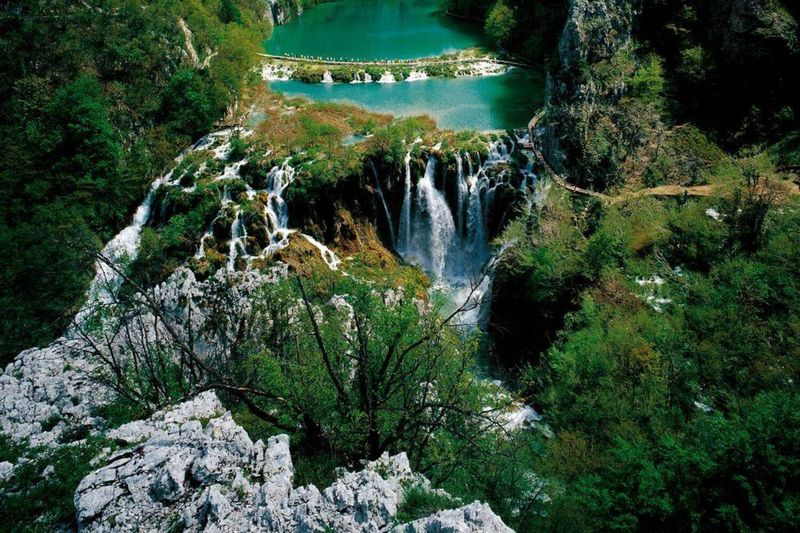
Most tourists visit Plitvice Lakes on sunny days, but experiencing this cascade of 16 terraced lakes during a summer thunderstorm is pure magic. The already-vibrant turquoise waters transform into dramatic rushing torrents as rain pounds the wooden walkways.
I once sheltered under a tiny wooden hut as lightning illuminated the entire valley, making the waterfalls look almost supernatural. Park rangers don’t close the park during light storms, but they’ll evacuate if conditions become dangerous.
Pro tip: Pack a waterproof camera and rain gear, then enjoy having Croatia’s busiest national park nearly to yourself. The misty atmosphere creates photographs unlike any postcard version you’ve seen before.
2. Stiniva Beach at High Tide
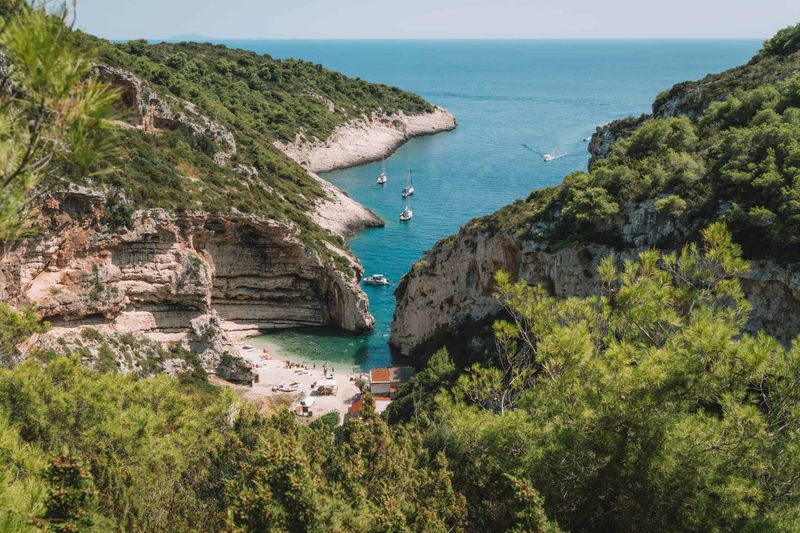
Hidden between towering cliffs on Vis Island, Stiniva Beach transforms from tranquil cove to churning cauldron when high tide meets strong winds. The narrow entrance—just 16 feet wide—creates a natural funnel that amplifies waves into spectacular crashes against the pebble shore.
Arriving by boat? Skippers refuse to enter during these conditions, forcing adventurous visitors to scale down the steep goat path from above. The reward is witnessing nature’s raw power in this stone amphitheater while most tourists hide in cafés.
Locals know that swimming here during these moments is foolish, but watching from the cliff edges offers an adrenaline rush as waves explode against ancient limestone walls.
3. Abandoned Hotel Belvedere in Dubrovnik
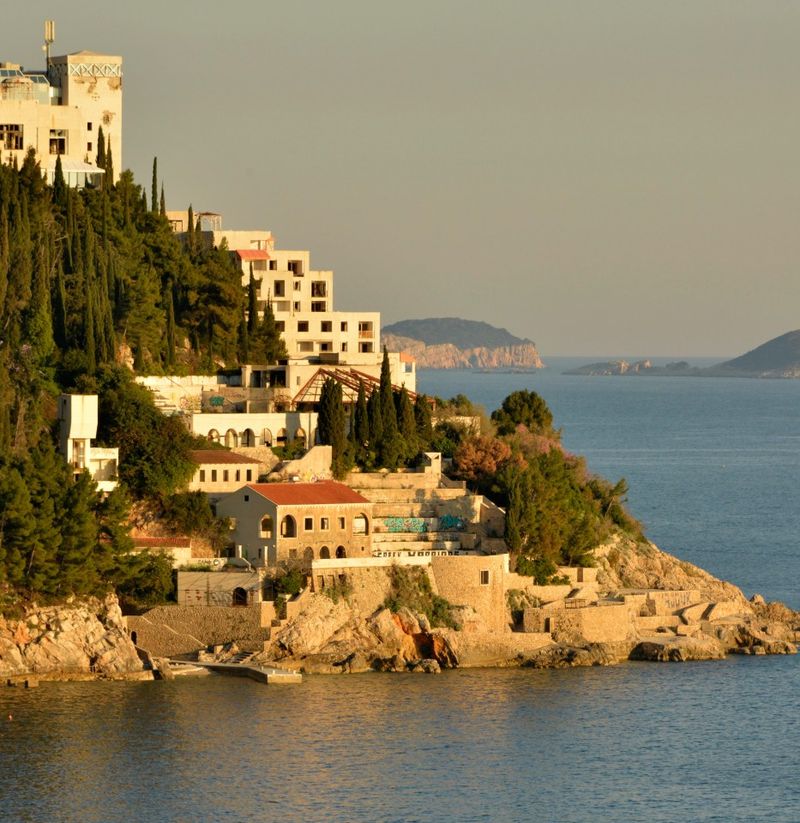
Clinging to cliffs just outside Dubrovnik’s walls sits Hotel Belvedere, a once-luxurious resort destroyed during the Croatian War of Independence. Abandoned since 1991, this concrete skeleton now serves as an unofficial playground for urban explorers and graffiti artists.
The hotel’s amphitheater—where you might recognize Game of Thrones filming locations—offers breathtaking views across the Adriatic. Technically off-limits but rarely patrolled, entering requires navigating broken glass and crumbling stairs.
What makes this place special isn’t just its eerie atmosphere but the stark contrast between war-torn ruins and million-dollar yachts floating in the bay below. Visit at sunset when golden light floods through bullet-riddled walls, creating an otherworldly backdrop for photos.
4. The Annual Sinjska Alka Tournament
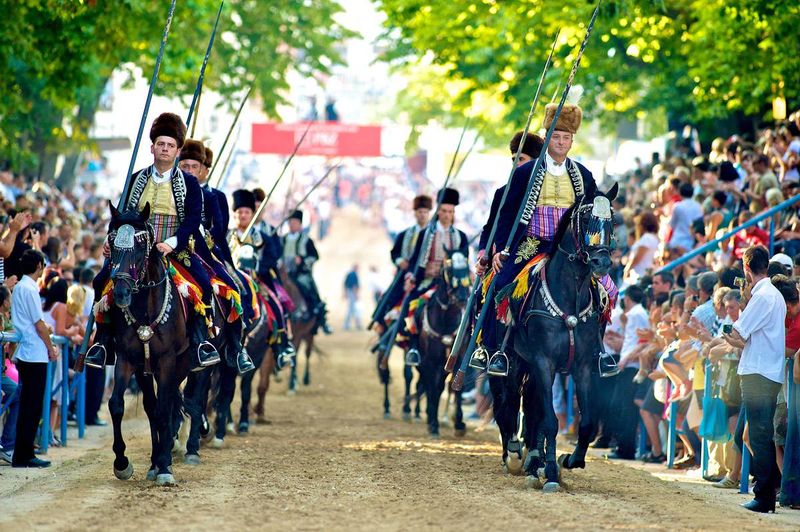
Dating back to 1715, this ancient knightly competition commemorates victory over Ottoman invaders with what might be Europe’s most dangerous equestrian sport. Riders gallop at full speed toward a tiny iron ring (the alka) suspended in air, attempting to spear it with lances while controlling powerful horses.
Unlike sanitized tourist attractions, the Sinjska Alka remains authentically Croatian—wild, loud, and slightly chaotic. The August competition transforms the small town of Sinj into a medieval spectacle where competitors wear original 18th-century uniforms weighing over 30 pounds even in summer heat.
If you want front-row seats, you’ll need to arrive hours early and be prepared for crowds, heat, and the occasional horse veering dangerously close to spectators. The raw energy is worth every uncomfortable moment.
5. Goli Otok Prison Island

Yugoslavia’s most notorious political prison now sits abandoned on a barren island in the northern Adriatic. Goli Otok (literally “Naked Island”) held thousands of political prisoners between 1949-1989, forcing them to build their own prison in scorching heat without shade.
Today, reaching this grim place requires hiring a local boat from Rab or Krk islands. No regular tours exist, and the crumbling prison complex has zero amenities—no water, food, or bathrooms. Summer temperatures regularly exceed 100°F on this vegetation-free rock.
Walking through decaying cell blocks and workshops delivers a sobering history lesson unlike anything in guidebooks. The island’s isolation and forbidding landscape create an atmosphere that’s simultaneously beautiful and deeply disturbing—perfect for travelers seeking meaningful discomfort.
6. Dinara Mountain During Bura Winds
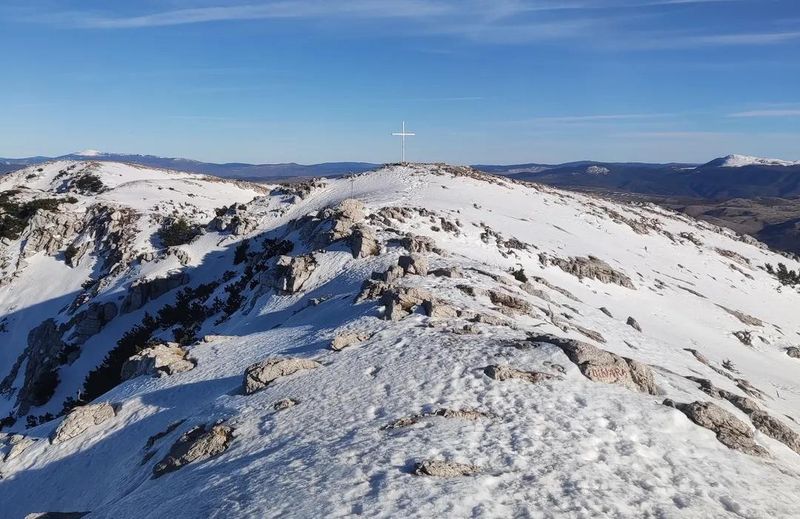
Croatia’s highest peak becomes a battleground when bura winds—the powerful northeastern gusts that can reach hurricane force—sweep across its exposed ridges. These winds have been known to flip cars on coastal highways, but experiencing them on Dinara’s limestone spine is next-level intensity.
Hiking here during mild bura conditions means leaning at 45-degree angles just to remain upright. The wind creates an otherworldly howling through rock formations while offering surreal visibility—on clear days, you can see all the way to Italy.
Rangers advise against climbing during strong bura forecasts, but moderate winds create an exhilarating challenge for experienced hikers. The primitive mountain hut near the summit provides emergency shelter, though its metal roof produces an all-night symphony of rattles and bangs.
7. Motovun Truffle Hunt With Untrained Dogs

Skip the tourist-friendly truffle hunts and connect with local families in Motovun who still hunt the traditional way—with partially trained dogs who sometimes have minds of their own. These authentic experiences often involve scrambling through muddy forests at dawn, far from marked trails.
When I joined the Prodan family’s hunt, their young dog Bruno caught a rabbit scent and dragged us through thorny underbrush for nearly a mile before finally focusing on truffles. We returned scratched and filthy but with precious black truffles worth hundreds of euros.
Unlike commercial tours, these authentic hunts follow no schedule and offer no guarantees. You might spend hours finding nothing or stumble upon a record-breaking specimen. Either way, you’ll experience the forest chaos that defines real truffle hunting.
8. Pag Island’s Zrće Beach After Hours
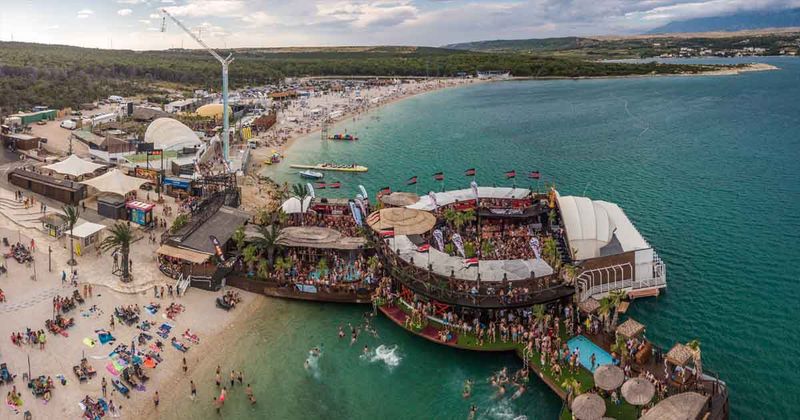
Known as “Croatia’s Ibiza,” Zrće Beach transforms from daytime party scene to something far more primal after 4 AM when the main clubs begin to empty. As dawn approaches, the beach becomes a fascinating collision of worlds—hardcore partiers, local fishermen preparing morning catches, and bewildered tourists who wandered too far from their resorts.
The shallow, pebbled shoreline becomes dotted with sleeping revelers while entrepreneurial locals set up impromptu grills selling ćevapi to hungry clubbers. Unlike carefully managed party beaches elsewhere, Zrće embraces its beautiful disorder.
If you’re seeking cultural insight rather than just another party, this twilight zone between night and day reveals Croatia’s fascinating contrasts. Just watch for sea urchins if wading—they’re particularly painful when encountered during a sunrise skinny dip.
9. Lastovo Carnival’s Poklad Ritual
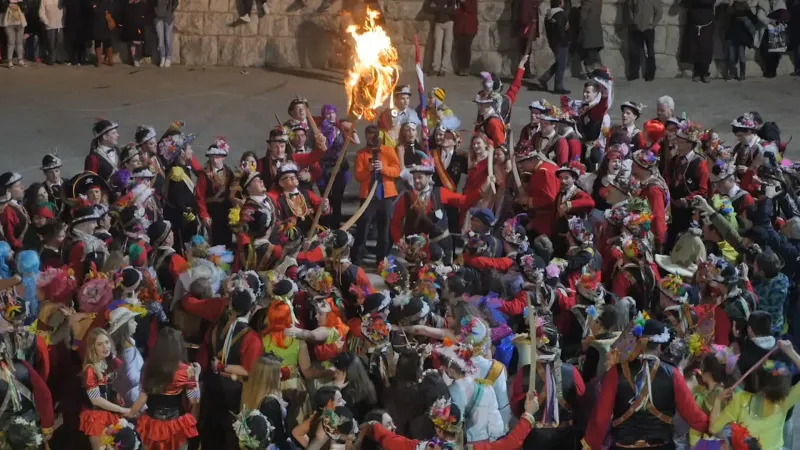
On Croatia’s remote Lastovo Island, carnival takes a wonderfully bizarre turn with the centuries-old Poklad ritual. Unlike commercialized festivals, this tradition involves a homemade doll stuffed with explosives that represents all evil from the previous year.
Villagers in traditional costumes spend the day dancing through narrow streets, collecting donations and drinking homemade rakija (fruit brandy). As darkness falls, the atmosphere grows increasingly unhinged. The explosive-filled doll is raised on a pole in the main square, then spectacularly blown up amid wild cheering.
Foreigners rarely witness this event because February seas make reaching the island difficult, and accommodations are scarce. Those who make the journey find themselves pulled into celebrations by locals who insist visitors participate rather than observe from a distance.
10. Rijeka’s Secret Tunnel Network
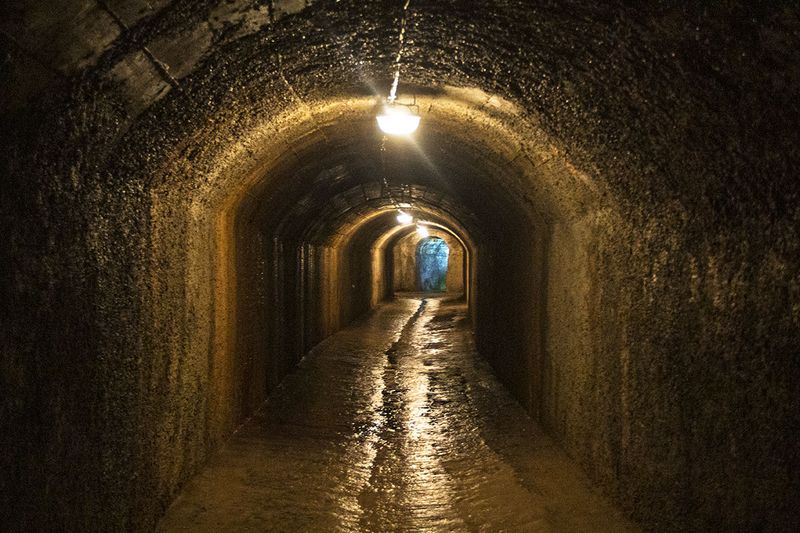
Beneath Rijeka’s streets lies a massive WWII-era tunnel system that once sheltered 25,000 people during air raids. While one tunnel section has been officially opened as a tourist attraction, urban explorers know that dozens of unmarked entrances exist throughout the city, leading to unexplored sections.
Finding these unofficial access points requires befriending locals at bars like Život or Nemo, where underground culture thrives both figuratively and literally. Some tunnels connect to abandoned factories and military installations from the Yugoslav era.
Venturing into unrestored sections means navigating pitch-black corridors with unstable floors and occasional flooded sections. No safety measures exist here—just raw, untouched history. The tunnels maintain a constant 57°F temperature year-round, creating an eerie microclimate where mushrooms grow from concrete walls.
11. Kornati Islands During Autumn Storms
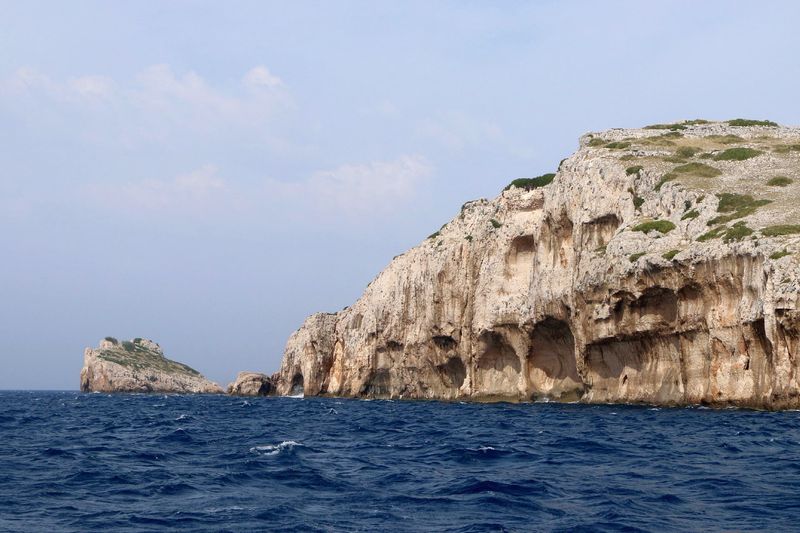
The Kornati archipelago transforms from summer sailing paradise to mariners’ challenge when autumn brings the jugo—a warm, humid southern wind that generates massive waves across the Adriatic. These 89 mostly uninhabited islands become a maze of whitecaps and swirling currents.
Hardy fishermen still navigate these waters in small boats, and joining them offers an adrenaline-pumping experience. The few stone shelters scattered across the islands become precious refuges when weather shifts suddenly—which it frequently does.
Unlike summer months when tour boats follow predictable routes, autumn journeys through Kornati require constant adaptation. You might plan to visit five islands but end up weathering a storm on just one. The unpredictability creates authentic adventure as you help haul nets or repair wind-damaged shelters alongside locals.
12. Međimurje’s Abandoned Cold War Bunkers
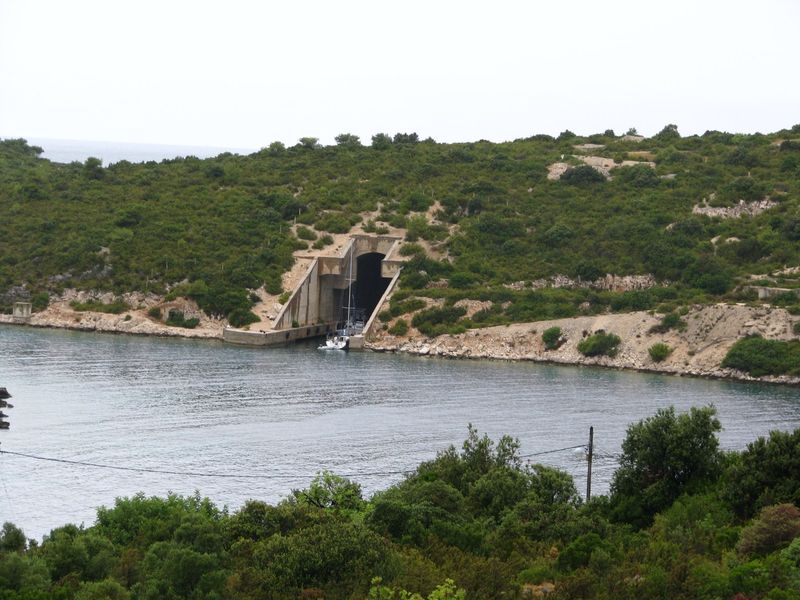
Hidden beneath innocent-looking hills in Croatia’s northernmost region lie massive concrete bunkers built to shelter Yugoslavia’s political elite during nuclear war. These structures remain unmarked on maps and are known primarily through local legends.
Access requires navigating unmarked forest roads and sometimes climbing through partially collapsed entrances. Inside, vast chambers designed to house hundreds still contain rusting Soviet-era equipment, propaganda posters, and occasionally bizarre items left by previous explorers.
What makes these bunkers particularly fascinating is how nature reclaims them—roots break through concrete ceilings while underground springs create surreal reflecting pools. No official tours exist, and the bunkers’ legal status remains ambiguous. This means you’ll likely have these massive time capsules entirely to yourself—if you can find them.
13. Vis Island’s Military Tunnels by Kayak
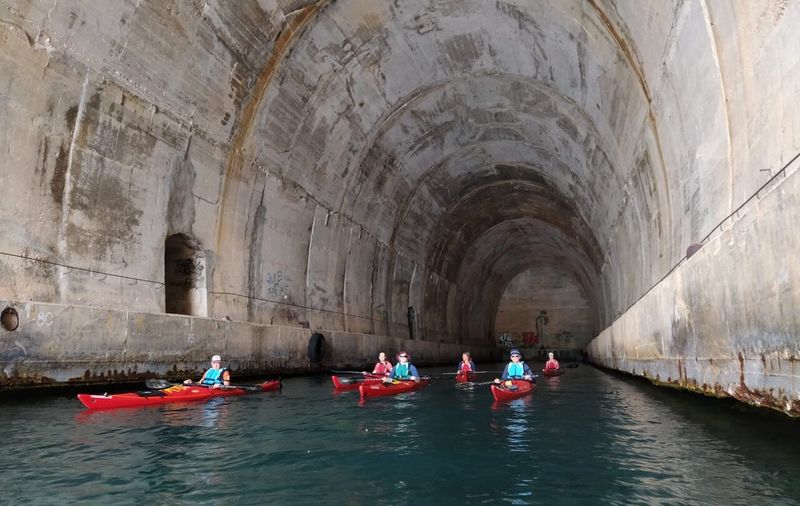
Yugoslavia’s military carved miles of tunnels into Vis Island’s coastline, creating a submarine base hidden from NATO surveillance. Today, these partially flooded tunnels can be explored by kayak—if you know where to find the unmarked entrances tucked between cliffs.
Paddling through these dark passages requires navigating by headlamp while avoiding submerged obstacles. The tunnels occasionally open into spectacular hidden coves inaccessible by land. Summer brings warm water temperatures, but winter explorers might encounter colonies of bats hibernating on tunnel ceilings.
Unlike official kayak tours that stick to scenic coastlines, this adventure involves military history, tight spaces, and occasional puzzling junctions where tunnels branch unexpectedly. Local fishermen sometimes use certain tunnels for storing equipment, creating surreal encounters deep inside the mountain.
14. Paklenica Canyon During Flash Flood Season

Rock climbers flock to Paklenica’s limestone walls all summer, but few experience the canyon’s dramatic transformation during autumn rains. Sudden downpours in the Velebit mountains send torrents of water cascading through narrow passages, creating temporary waterfalls and rapidly rising water levels.
Hiking the canyon during these conditions means constantly evaluating escape routes and listening for the distinctive rumble that precedes flash floods. Park rangers post warnings but don’t close trails, leaving decisions to visitors’ judgment.
The reward for this calculated risk is witnessing nature’s raw power reshaping the landscape in real time. Massive boulders move downstream, new caves appear as others collapse, and the entire ecosystem refreshes before your eyes. The canyon’s acoustics amplify water sounds into an overwhelming symphony that vibrates through your entire body.
15. Lim Channel’s Pirate Caves at High Tide
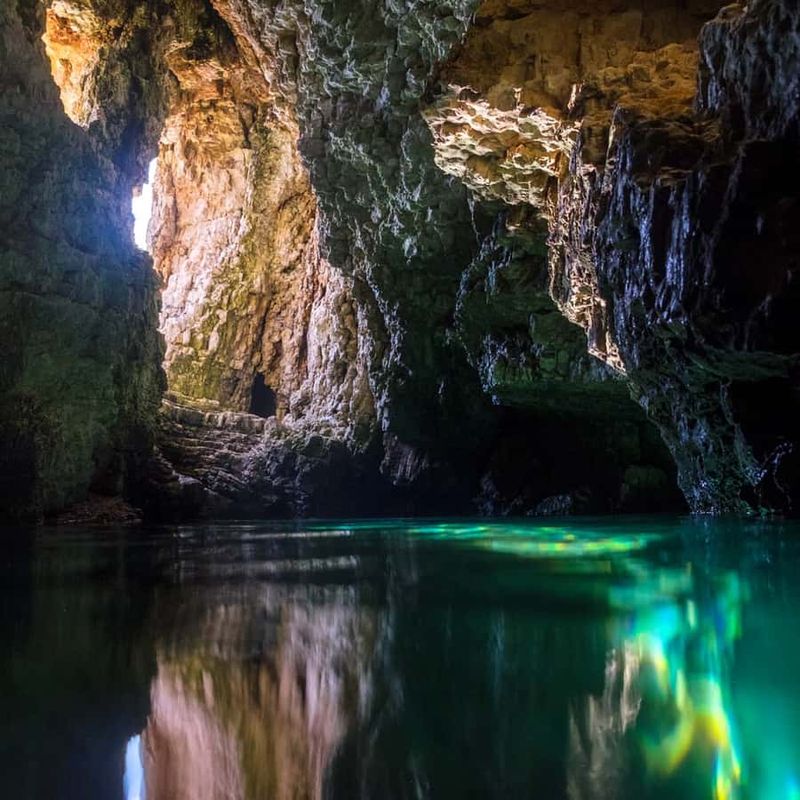
This narrow, fjord-like inlet on Istria’s western coast hides sea caves once used by pirates to ambush Venetian merchant ships. During exceptionally high tides—especially during full moons—these caves become accessible only by swimming through submerged entrances that open into air-filled chambers.
Local fishermen know the precise timing when these underwater passages briefly become navigable. The experience requires holding your breath while swimming through darkness, trusting that an air pocket awaits on the other side.
Inside these chambers, stalactites created by millennia of dripping water catch what little light filters through, creating otherworldly reflections on the water surface. The caves contain no facilities, markers, or safety equipment—just raw, unexplored nature. Occasional finds of ancient pottery fragments remind visitors that these passages have sheltered humans for thousands of years.
